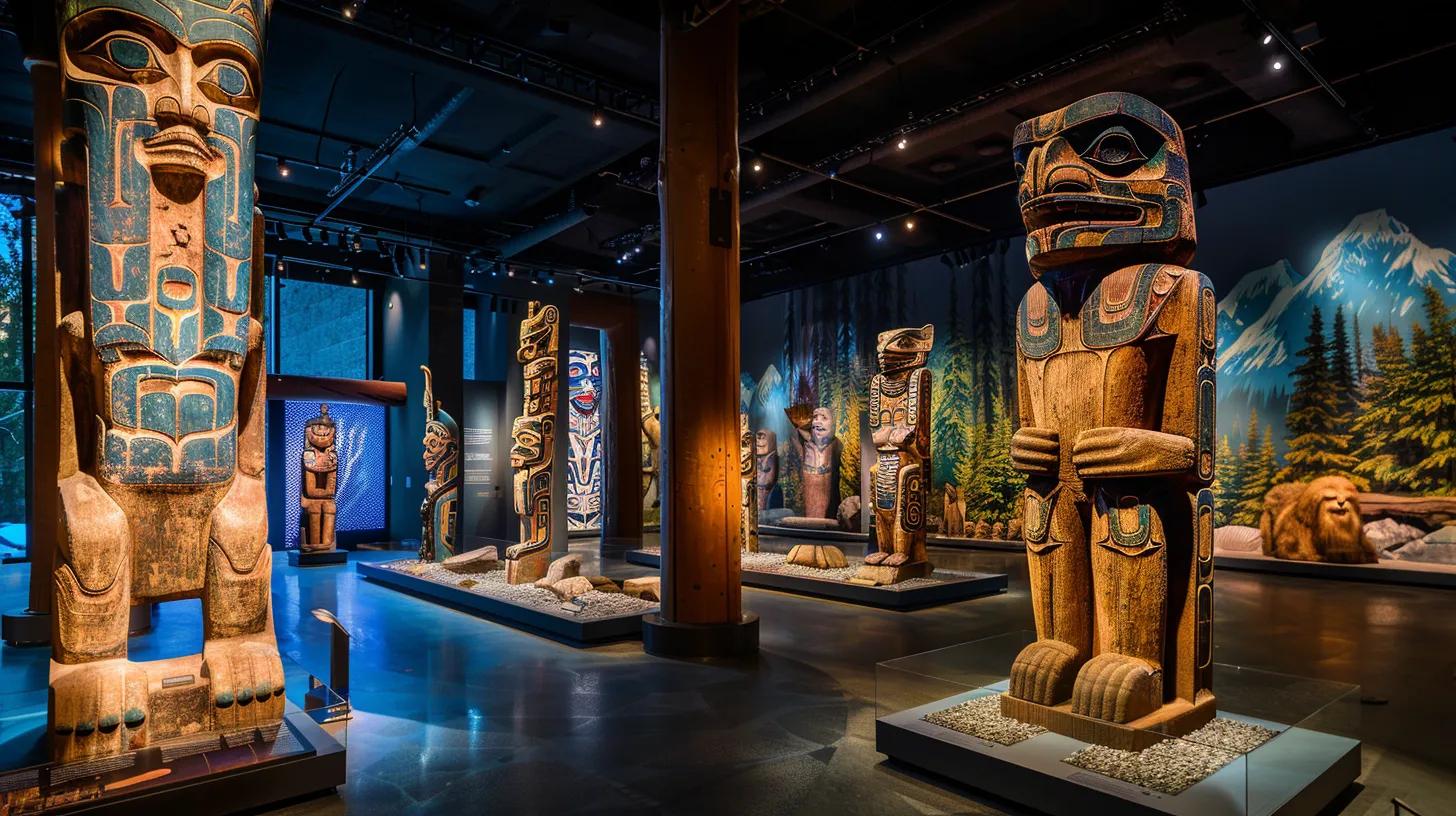Table Of Contents:
- What the Ice Age Teaches Us About Climate Change Today
- Understand the Historical Impact of the Ice Age on Climate
- Learn From the Ice Age Climate Trends and Changes
- Explore Lessons on Adaptation From Ice Age Species
- Connect Ice Age Insights to Modern Climate Science
- Examine Policy Implications Inspired by Ice Age Evidence
- Appreciate the Human Response to Ice Age Challenges
- Table: Key Climate Drivers During the Ice Age
- Frequently Asked Questions
- Final Thoughts
What the Ice Age Teaches Us About Climate Change Today
The Ice Age remains one of the most significant epochs in Earth’s history, serving as a natural laboratory for understanding climate change mechanisms and their impact on ecosystems, species, and human survival. During this period, dramatic shifts in temperature, precipitation, and atmospheric composition transformed both the physical landscape and the biological communities. Insights from paleoclimatic data, glacial geology, and species survival patterns help modern science forecast climate scenarios, develop mitigation techniques, and inform policy. This article examines the Ice Age’s impact on climate, key paleoclimatic trends, and how these lessons guide today’s climate science and policy.
Understand the Historical Impact of the Ice Age on Climate
The Ice Age reshaped Earth’s climate, leaving enduring changes still evident today. Ice cores, sediment deposits, and fossil records have been used to reconstruct past temperature shifts and atmospheric conditions. Low temperatures, reduced sea levels, and high albedo due to widespread snow cover worked together to regulate Earth’s energy balance.
Analyze How Temperature Shifts Shaped Ancient Ecosystems
Rapid cooling during the Ice Age forced ecosystems to adapt or perish. Temperature drops caused boreal forests to expand toward the equator while tropical zones contracted. Such shifts led to innovative adaptations in flora and fauna—for example, many species evolved thicker fur and increased fat storage to survive the cold. Cycles driven by Milankovitch cycles and orbital forcing accelerated habitat expansions and contractions, increasing interspecies competition and spurring evolutionary adaptations. Fossil evidence and pollen analyses document the transformation from open grasslands to dense forests over millennia.
Examine the Role of Glaciers in Altering Landscapes
Glaciers were not static ice masses; they actively sculpted the land. Their movement carved valleys, formed fjords, and left behind moraines, drumlins, and eskers. As glaciers advanced and retreated, they eroded rock, deposited sediments, and reshaped drainage patterns and soil fertility. The redistribution of nutrients by glacial meltwater helped form post-glacial landscapes that would later support human agriculture. Additionally, the weight of glaciers affected the Earth’s crust, leading to isostatic rebound—a process still observable today—which established the framework for modern river systems and coastlines.
Discuss Species Extinction Patterns During the Ice Age
Species extinction occurred in waves during the Ice Age due to rapid climate changes and habitat fragmentation. Many species, including large megafauna like the woolly mammoth and saber-toothed cat, could not adapt quickly enough as their habitats shrank or transformed. Combined pressures from climate stress and human hunting accelerated these losses. Fossil records show synchronous extinction events across regions, underscoring the global impact of climatic shifts. Overall, these patterns highlight the vulnerability of species to rapid environmental change and the importance of adaptability.
Learn From the Ice Age Climate Trends and Changes

The Ice Age climate trends—characterized by temperature fluctuations and changes in carbon dioxide levels—offer crucial insights into Earth’s climate system. Even minor changes in atmospheric composition or solar radiation can trigger profound, long-term climatic shifts. The following sections explore the causes of these fluctuations and their broader implications.
Identify Temperature Fluctuations and Their Causes Over Time
Temperature variations during the Ice Age were driven by a mix of orbital variations, volcanic activity, and ocean circulation. Changes in Earth’s orbit and axial tilt altered solar radiation distribution, triggering cycles of cooling and warming. Milankovitch cycles played a central role in establishing glacial and interglacial periods, while volcanic eruptions temporarily cooled the planet by releasing reflective aerosols. Shifts in thermohaline circulation from melting glaciers also redistributed oceanic heat, contributing to regional climate differences. These interconnected factors illustrate how slight external changes can trigger significant climatic responses over long time scales.
Highlight the Shifts in Carbon Dioxide Levels During the Era
Carbon dioxide levels during the Ice Age fluctuated between roughly 180 and 280 parts per million (ppm), correlating closely with temperature changes. Ice core data from Antarctica and Greenland reveal that lower CO₂ concentrations coincided with glacial phases, while interglacial periods saw higher levels. These changes were influenced by the solubility of CO₂ in colder oceans and shifts in terrestrial vegetation that affected carbon sequestration. The strong relationship between CO₂ and temperature underlines a positive feedback within the climate system—lower greenhouse gas concentrations led to further cooling, reinforcing glacial conditions. This understanding has been key in refining modern climate models.
Investigate How Human Activity Influenced Climate Change
Although major human-induced climate change is a recent phenomenon, early human activities during the later stages of the Ice Age began to leave subtle environmental marks. Prehistoric populations altered regional ecosystems through hunting, land clearance, and fire management, which in turn affected vegetation cover and albedo. While these changes did not drive Ice Age climate variability, they provide valuable context for current debates on anthropogenic climate change. Comparisons between preindustrial and modern-era data show a clear shift; natural factors once dominated, but today human emissions are the main drivers of climate shifts.
Explore Lessons on Adaptation From Ice Age Species
The Ice Age underscored the critical importance of adaptability for survival. By examining how organisms coped—or failed to cope—with harsh climatic conditions, we gain insights relevant to today’s challenges. This section reviews examples of successful adaptations, the consequences of failure, and lessons applicable to modern conservation efforts.
Review Species That Adapted Successfully to Changing Climates
Many species thrived during the Ice Age by employing flexible strategies. Organisms that adjusted their behavior, diet, and migration patterns were better suited to survive rapid changes. For instance, some plant species developed symbiotic relationships with pollinators, while certain mammals adopted seasonal migrations and evolved physical traits such as variable fur color. These adaptations underscore the value of genetic diversity and phenotypic plasticity in facing climatic stress.
Discuss Extinction of Species Unable to Adapt
In contrast, species with rigid ecological niches struggled to cope with the fast-paced changes. The woolly mammoth is a prime example; its specialized habitat and slow reproduction made it vulnerable to rapid environmental shifts and increased human pressure. Similar patterns were observed in other large predators and herbivores, where an inability to adjust led to irreversible biodiversity loss. This history informs modern conservation strategies, highlighting the need to maintain genetic resilience and ecosystem connectivity.
Analyze How Adaptability Is Essential for Current Species
Today, as species face habitat fragmentation, altered precipitation, and extreme weather events due to climate change, adaptability remains key. Research shows that species with high genetic variability are more likely to adjust through changes in breeding times, migration routes, or dietary habits. In modern ecosystems, fostering resilience through conservation and sustainable management is crucial to help species survive rapid environmental changes.
Connect Ice Age Insights to Modern Climate Science

Modern climate science gains substantially from the study of Ice Age phenomena. Paleoclimatic data are integral to refining climate models and predicting future trends. By comparing ancient climate events with current observations, scientists can identify factors that govern global temperature and atmospheric changes—knowledge vital for addressing today’s climate challenges.
Assess Scientific Research Linking Past Climates to Today
Research consistently links the climate patterns of the Ice Age to modern climatic phenomena. Analyses of ice cores, sediment layers, and fossil records reveal that glacial periods were marked by lower CO₂ concentrations and reduced sea levels, while interglacial periods exhibited rapid warming and higher greenhouse gas levels. These findings, supported by studies from institutions like the National Academy of Sciences, offer benchmarks to validate contemporary climate models that factor in natural feedback mechanisms such as the ice–albedo effect and thermohaline circulation.
Explore Models Predicting Future Climate Scenarios
Climate models that incorporate Ice Age data are essential tools for forecasting future changes. By using historical data to simulate temperature rises, ice sheet dynamics, and sea level variations, scientists can predict outcomes under different greenhouse gas emission scenarios. For example, models considering orbital forcing and Milankovitch cycles suggest that even modest increases in greenhouse gases could trigger significant climate shifts. Such predictive capabilities are not only academically valuable but also critical for shaping robust public policy and climate adaptation strategies.
Examine Policy Implications Inspired by Ice Age Evidence
The climate evidence from the Ice Age provides compelling guidance for policymakers confronting modern climate change. Abrupt shifts and natural feedback mechanisms observed in past epochs underscore the need for proactive and adaptive climate strategies. By understanding these patterns, policymakers can design measures to mitigate global warming while supporting sustainable ecosystem adaptation.
Discuss Historical Climate Strategies and Their Effectiveness
Historical adaptations during the Ice Age offer valuable case studies for modern policy. Early human communities developed innovative strategies—such as migration, insulated shelters, and sustainable resource management—to survive extreme climates. These methods, though localized, embody core principles of resilience and adaptation that continue to influence modern practices like renewable energy adoption, sustainable land management, and urban planning that mimics natural water cycles.
Propose Modern Adaptations Based on Past Successes
Modern climate adaptation requires a blend of innovative technologies and lessons from the past. Current proposals include restoring natural landscapes to boost ecosystem services, developing infrastructure resilient to extreme weather, and integrating traditional knowledge from indigenous communities. For example, managed retreat strategies and blue-green infrastructure in coastal areas reflect natural erosion and sediment deposition patterns observed during glacial retreats. Investments in renewable energy and carbon sequestration also draw on historical relationships between CO₂ levels and global temperatures, creating sustainable development pathways that honor the lessons of the Ice Age.
Appreciate the Human Response to Ice Age Challenges

Human resilience during the Ice Age offers a powerful blueprint for confronting today’s climate crisis. By studying ancient survival strategies, modern communities can learn how to navigate uncertainty and rapid environmental changes.
Study Ancient Human Survival Strategies in Harsh Climates
Early humans demonstrated remarkable ingenuity in facing severe Ice Age conditions. They built insulated shelters, utilized cave dwellings, and developed tools to efficiently procure food and process resources. Social cooperation and the transmission of survival skills across generations were central to maintaining resilient communities. These historic strategies, including the creation of warm clothing and the controlled use of fire, continue to inspire modern approaches to disaster preparedness and resource management.
Evaluate Community Resilience During Climate Changes
Community resilience in the Ice Age was marked by adaptability, collective resource sharing, and innovative problem-solving. Early populations formed strong social networks, shared resources, and developed technologies to buffer against unpredictable climates. Today, these lessons are mirrored in community-based adaptation programs, disaster preparedness initiatives, and social safety nets that help mitigate the impacts of climate change. The emphasis on collective effort remains essential for building sustainable societies.
Table: Key Climate Drivers During the Ice Age
Before examining further policy implications, consider the following table that summarizes the major climate drivers of the Ice Age and their impacts on global climate.
This table illustrates how natural processes combined to produce the complex climate patterns of the Ice Age. Each driver not only shaped past climates but also informs modern research on feedback mechanisms. Understanding these interactions is vital for developing strategies that maintain balanced ecosystems and reduce anthropogenic impacts.
An analysis of these drivers shows that even small changes can lead to cascading effects across the global climate system, reinforcing the need for integrated, ecosystem-based approaches to climate mitigation.
Frequently Asked Questions
Q: How did temperature shifts during the Ice Age impact ancient ecosystems? A: Temperature shifts reorganized ecosystems by expanding cold-adapted species and contracting heat-dependent ones. These changes altered vegetation zones and migration patterns, as fossil records show tropical flora transforming into tundra or boreal forests, highlighting the need for adaptive survival strategies.
Q: What role did glaciers play in shaping the Earth’s landscape during the Ice Age? A: Glaciers sculpted the terrain through erosion and sediment deposition, carving valleys, fjords, and moraines. Their movement influenced modern drainage patterns, soil fertility, and even created natural reservoirs that continue to support ecosystems today.
Q: Why are carbon dioxide levels significant when studying the Ice Age? A: CO₂ levels are crucial indicators of greenhouse effects. During the Ice Age, lower CO₂ concentrations aligned with colder climates, while warmer interglacial periods saw higher levels. Understanding these dynamics informs modern debates on anthropogenic emissions and climate regulation.
Q: What lessons can modern society learn from the adaptability of Ice Age species? A: The success of species that adapted through behavioral, physiological, and genetic changes emphasizes the importance of flexibility. Modern conservation efforts can draw on these lessons to support biodiversity and develop sustainable strategies amid rapid climate change.
Q: How do Ice Age climate models assist in predicting future climate scenarios? A: Ice Age models, based on extensive paleoclimatic data, provide a historical framework for how small external changes can trigger major shifts. They help predict future temperature trends, sea level changes, and ecosystem responses under various greenhouse gas emission scenarios.
Q: In what ways did human populations adapt to Ice Age conditions, and how is this relevant today? A: Humans developed survival strategies such as migration, resource sharing, and technological innovations to cope with extreme climates. These approaches underscore the importance of social resilience and are directly applicable to modern strategies for disaster preparedness and community planning.
Q: What is the significance of feedback mechanisms, like the albedo effect, observed during the Ice Age? A: The albedo effect, where increased ice cover reflects more sunlight, amplified cooling trends during the Ice Age. Recognizing these feedbacks is essential for modern climate science, as they can either mitigate or exacerbate warming trends, guiding strategies to manage polar ice loss.
Final Thoughts
The study of the Ice Age provides enduring insights into Earth’s climate system. By examining glacial processes, temperature fluctuations, and species adaptations, researchers have developed strategies that remain highly relevant today. Integrating paleoclimatic data into modern climate models enhances our understanding and informs effective policy decisions for a sustainable future. Ultimately, the lessons of the Ice Age remind us that adaptability, cooperation, and proactive planning are vital for confronting both past and future climate challenges.
